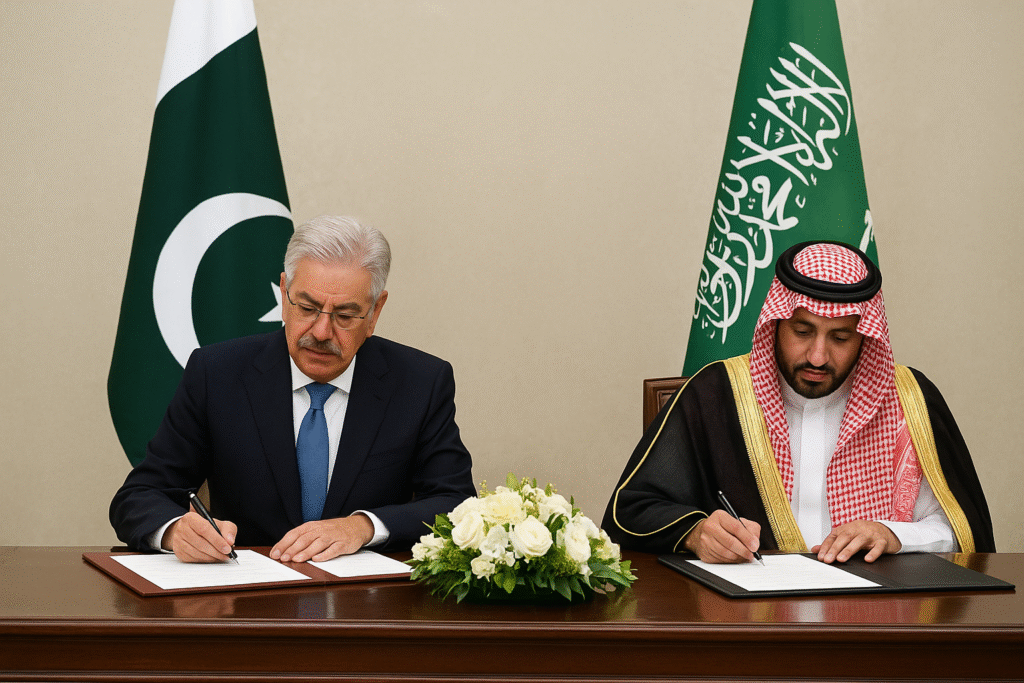
In a landmark move in September 2025, Pakistan and Saudi Arabia formalized a defence alliance that could reshape the strategic landscape not only in South Asia but across the Middle East. Under the Strategic Mutual Defense Agreement, an attack on one country will be treated as an attack on both. Beyond the signed words, this pact signals deeper shifts in trust, deterrence, and geopolitical alignments.
What the Pact Says
The agreement requires both countries to respond jointly to any aggression against either of them. It commits to strengthening defense cooperation and joint deterrence against threats. Pakistan’s Defence Minister has also stated that the country’s nuclear deterrent might be made available to Saudi Arabia under this agreement, suggesting that Saudi Arabia could be under Pakistan’s nuclear umbrella.
Officials emphasize that the pact is defensive in nature, not offensive. It is designed to ensure protection and stability rather than provoke confrontation. Another striking aspect is that the arrangement is open for other Arab nations to join under similar terms, creating potential for a broader regional defense framework.
Why Now The Context
Recent attacks in the region, especially the Israeli airstrike in Doha, have unsettled many Gulf states. These incidents highlight vulnerabilities and raise doubts about the reliability of traditional security guarantees. As U.S. influence is seen as less predictable, Saudi Arabia appears to be diversifying its defense partnerships. Pakistan, with its nuclear capability and military experience, emerges as a trusted partner.
The two countries already share a long history of ties, including economic support, religious bonds, and military cooperation. Pakistani forces have trained Saudi troops in the past, and Saudi Arabia has extended financial support to Pakistan during difficult economic times. This pact simply formalizes a relationship that has been developing for decades.
